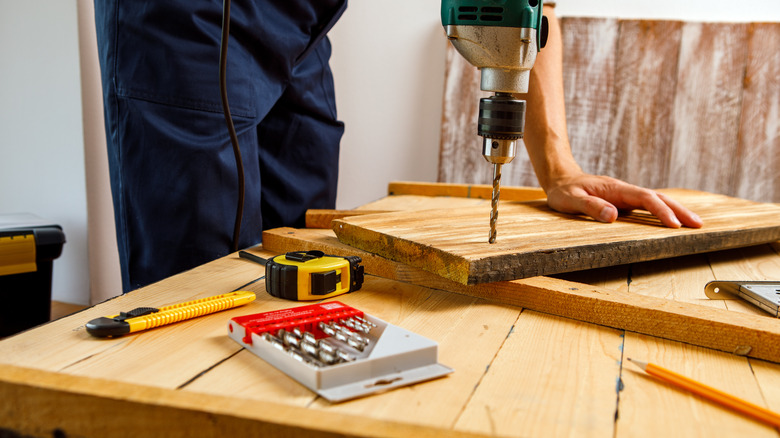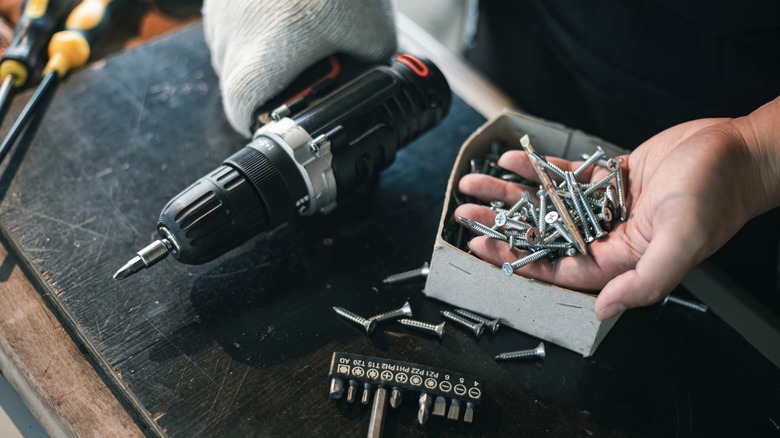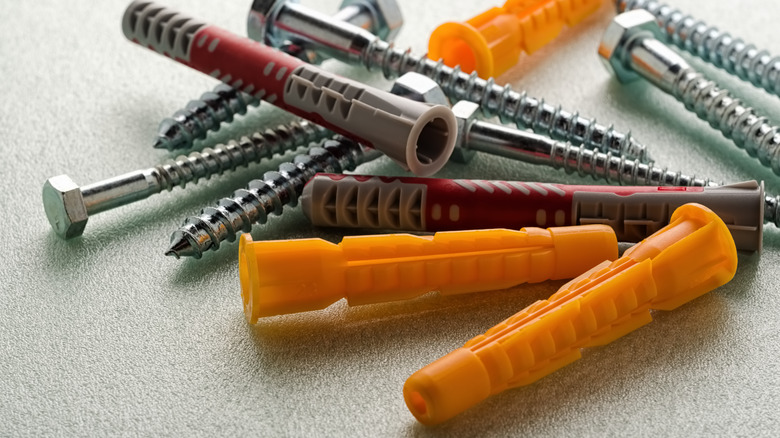How To Choose Which Drill Bit To Use For Your Next Project
If you're starting a new hobby in home improvement or building, a power drill is one of the most useful tools to keep around. They're perfect for creating pilot holes, assembling furniture, and even mixing paint, and because of that, they're often one of the first power tools a new builder will add to their collection. While the design is simple, there's still a bit of a learning curve when it comes to deciding exactly what size bit is right for the job.
Drill bit kits come with a variety of different styles for each job, but if you're looking to drill a simple hole in wood or drywall, you'll need a set of twist drill bits (via The Home Depot). These come in various sizes and coatings, and there are slight differences in style, each built for drilling into different materials. Picking up a basic set will get you started with what you need, but determining the proper size bit for a pilot hole can get a little tricky. Luckily, there are two easy ways to figure it out.
Finding the correct size for a screw
Drilling a pilot hole is a good way to make sure your screw goes in more easily and prevents wood, drywall, etc. from cracking. Instead of forcing the full screw through the material you're working on, a pilot hole makes sure only the threaded part of the screw bores through the material. That means a lot less work and a much cleaner finished product (via Lowe's).
If you're lucky, your screw will have a marking underneath the head that specifies the size of the bit you should be using. It's easy to miss because it's so tiny, but if your screw has these numbers, you have a guaranteed fit. Unfortunately, that isn't always the case. If you're unsure of a screw's size, you may have to do a bit of eyeballing. Hold up your screw to different-sized bits, and find the one that matches the inner diameter of the central column, without the teeth. If you're still a bit unsure, it's always better to err on the side of caution with a smaller bit and work your way up.
Determining size for an anchor
If you're planning to hang something heavier, you may find yourself trying to drill a hole to fit a wall anchor. These convenient little pieces of plastic can help add some extra strength and backing to your drywall to prevent a resulting massive hole from hanging something too heavy (via The Home Depot). Some packs of anchors come with convenient instructions on which size drill bit to use to create a pilot hole, but if you're pulling one out from the bottom of a toolbox, you may have to improvise a bit. The general rule of thumb is to go slightly smaller than the diameter of the anchor, but large enough to fit into the wall without too much resistance.
If you're new to using power tools, figuring out the right size and type of bit to use for your project can be an intimidating task. Luckily, it's usually pretty simple. If it's not written out, all it takes is a bit of comparison.


